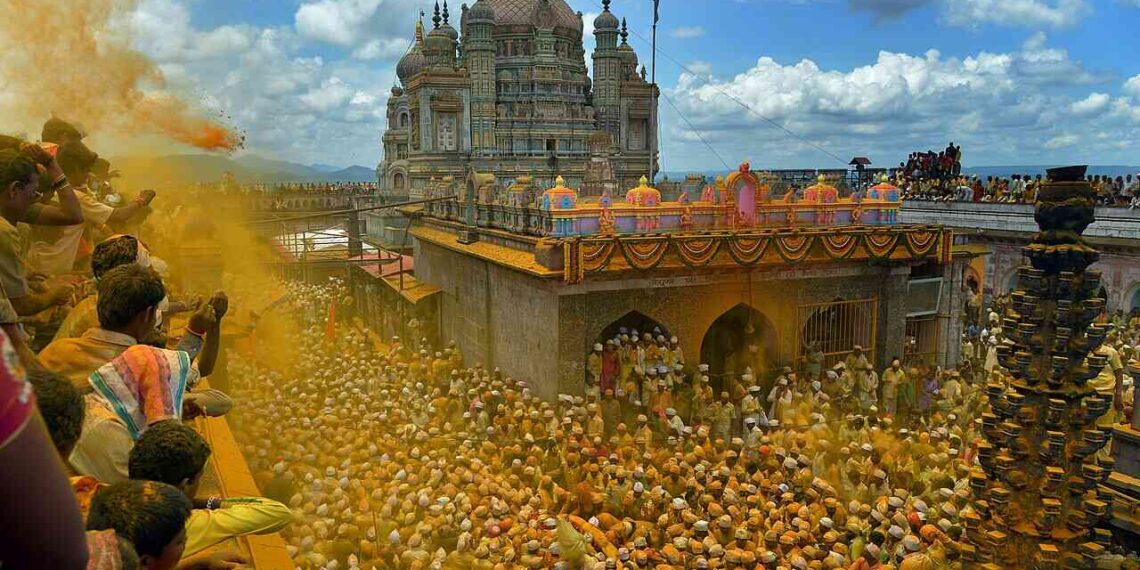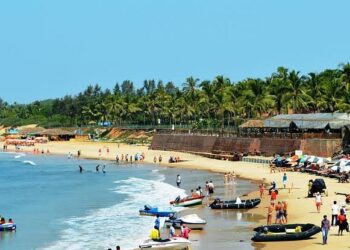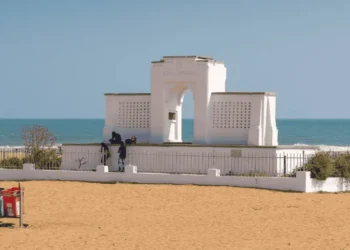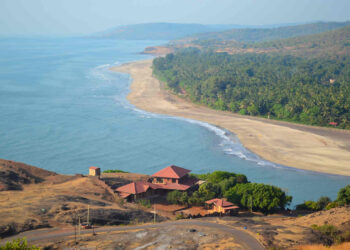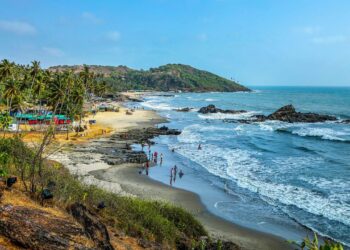Crowned on a hillock in Jejuri town, Pune district, Maharashtra, the Jejuri Khandoba Temple is dedicated to Lord Khandoba, a fierce form of Lord Shiva, and is one of the most revered Hindu shrines in India. Located about 50 km from Pune city, the temple is also known as the “God of Jejuri”. Khandoba is worshipped as a warrior deity, and the temple is a spiritual hub for the region’s devotees. If you’re keen on visiting this divine abode, here’s a detailed guide on its significance, architecture, rituals, and travel tips for your journey.
Fun Fact: The temple is nicknamed “Sona Cha Jejuri” (Golden Jejuri) due to the turmeric powder (bhandara) showered during festivals, giving the hill a golden glow.
Mythological Importance
The Jejuri Khandoba Temple has ancient legends. One story tells of a sage named Jejur, who prayed on this hill, seeking Lord Shiva’s aid to defeat a demon troubling his people. Shiva appeared as Khandoba, wielding a sword, and vanquished the demon, granting protection. Another tale speaks of Khandoba marrying Mhalsa, a local goddess, on this hill, uniting divine powers. Local belief holds that the hill’s stones hold sacred energy, offering courage and victory. This makes the temple a key Khandoba shrine, tied to valor and divine union.
Historical Overview
The temple began in the 9th century, under the Yadava dynasty, though some say worship started earlier. Jejuri, 50 km from Pune, was a holy spot, as old records show. A stone inscription from 890 CE near the hill marks a sacred idol, but the temple grew with Yadava kings. In the 14th century, Bahamani rulers added stone halls, as carvings note. The 1600s saw Maratha chiefs build fortified steps, making it a busy pilgrimage place, Pune logs say. In the 1700s, Peshwa rulers gifted silver ornaments, and prayers continued. After 1947, Maharashtra’s leaders took over, and the Temple Trust now cares for it. From 2015 to 2020, repairs added new paths while keeping the old sanctum. Marathi songs by saints like Eknath, who sang of Khandoba, spread its name. Today, it stands as a sign of strong faith, calling thousands to Jejuri’s hill.
Architecture of Jejuri Khandoba Temple
The Jejuri Khandoba Temple, covering 3 acres, blends Yadava and Maratha styles, rooted in the hill’s rugged charm. The shikhara, rebuilt in 1700, rises high with stone carvings of Khandoba with his sword, Mhalsa with a lotus, and devotees chanting, painted in saffron and white. A stone gate with vine patterns leads to the sanctum, where the Khandoba idol, 3 feet tall, stands under a plain vimana, its stepped roof showing purity. The sanctum’s granite walls, worn by time, hold faint Yadava etchings of Khandoba’s battles, lit by sesame oil lamps.
Small shrines for Mhalsa, Ganesha, and Hanuman are scattered on the hill, carved from local basalt with open stone covers. The Mhalsa shrine, from 1100 CE, shows her with a fan, granting love. The Ganesha shrine, by the steps, depicts him with a modak, calling for wisdom. The Hanuman shrine, near the courtyard, shows him with a mace, carved in devotion. These shrines, though simple, join the temple’s worship, offering paths to faith.
Perched on a hill, the temple is reached by 450 stone steps from Jejuri town, worn by pilgrims over centuries. The steps pass rocks with old Khandoba carvings, some hidden in stone, others open to the sky. The hilltop courtyard, paved with rough granite, feels holy, shaded by neem and tamarind trees. A stone tank, fed by a hill spring, is used for ritual baths, its edges carved with lotus shapes, a Maratha touch. The temple’s low walls, made of plain stone, have niches for Naga figures, said to guard the grounds.
Carvings on pillars and walls tell Khandoba’s stories—his fight with demons, his marriage to Mhalsa, and his warrior form—etched to guide devotees. The 2020 repairs added firm paths but kept the hill’s wild, sacred feel, making it a vibrant place for prayer.
Rituals and Festivals
The temple holds festivals with full spirit. Champashashti, in November or December, is the grandest, honoring Khandoba with Bhandara Utsav (turmeric showers) and chariot processions. Shravan Maas, in July or August, has Abhishekam with sacred water. Deepavali, in October or November, sees lamp-lighting by the tank. Daily worship includes Suprabhata Seva (morning prayers), Archana (offerings), and Sandhya Aarti (lamp ritual). Services like Khandoba Homam and Panchamrit Puja can be booked at the temple office. A prasad stall gives free jaggery sweets to devotees. Turmeric Archana, offering bhandara on Sundays, is for victory and strength.
How to Get There:
Air: Pune Airport, 50 km away, is nearest. Taxis take 1 hour, costing ₹1200-1800.
Train: Jejuri Railway Station, 2 km away, links to Pune (1 hour) and Mumbai (4 hours). Autos to the temple cost ₹50-100.
Road: Jejuri is 50 km from Pune. Buses from Pune’s Swargate Bus Stand (1 hour) cost ₹80; autos from Jejuri town cost ₹20-40.
Best Time to Visit: October to March has cool weather, 20-30°C. Weekdays are calm. Champashashti brings crowds, so book early.
Nearby Attractions: Bhuleshwar Temple, 30 km away, is a Shiva shrine. Purandar Fort, 20 km away, offers historical views. Pandharpur’s Vitthal Temple, 150 km away, is a Vishnu pilgrimage site.
